IMPRESSIONS: From Los Angeles - Reinterpreting the Body with Lionel Popkin’s “Reorient the Orient” at REDCAT
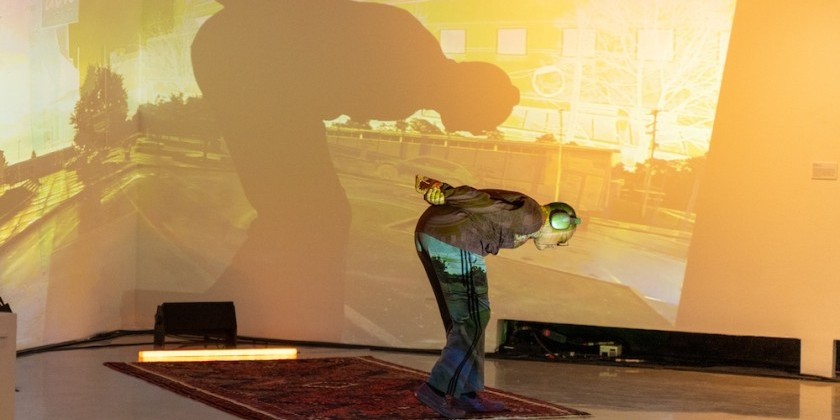
Directed by Lionel Popkin
Performed by Jay Carlon, Lionel Popkin, Arushi Singh, Willy Souly
Original Sound by Tom Lopez // Video Design by Meena Murugesan //Set and Costumes by Marcus Kuiland Nazario // Lighting Design by Christopher Kuhl // Art and Archive Consultation by Cori Olinghouse // Stage Manager: Paige O’Mara // Production Assistant: Jackie Davis // Marketing/Publicity: Kelly Hargraves, Lynn Tejada // Map Design by Jesse Bonnell, Foghorn Productions
“Do you mind if I scream?” was whispered through a speaker in the gallery space at REDCAT in downtown L.A. Performers moved in silence atop rugs scattered through the space, either isolating a hip joint or squatting in place while audience members watched. Slowly, the intensity and tempo heightened. The movement became more rash. Headphones flew to the ground and the folding of clothes turned into a cacophonous storm. The performers screamed everything choreographer and performer Lionel Popkin desired while saying nothing at all.
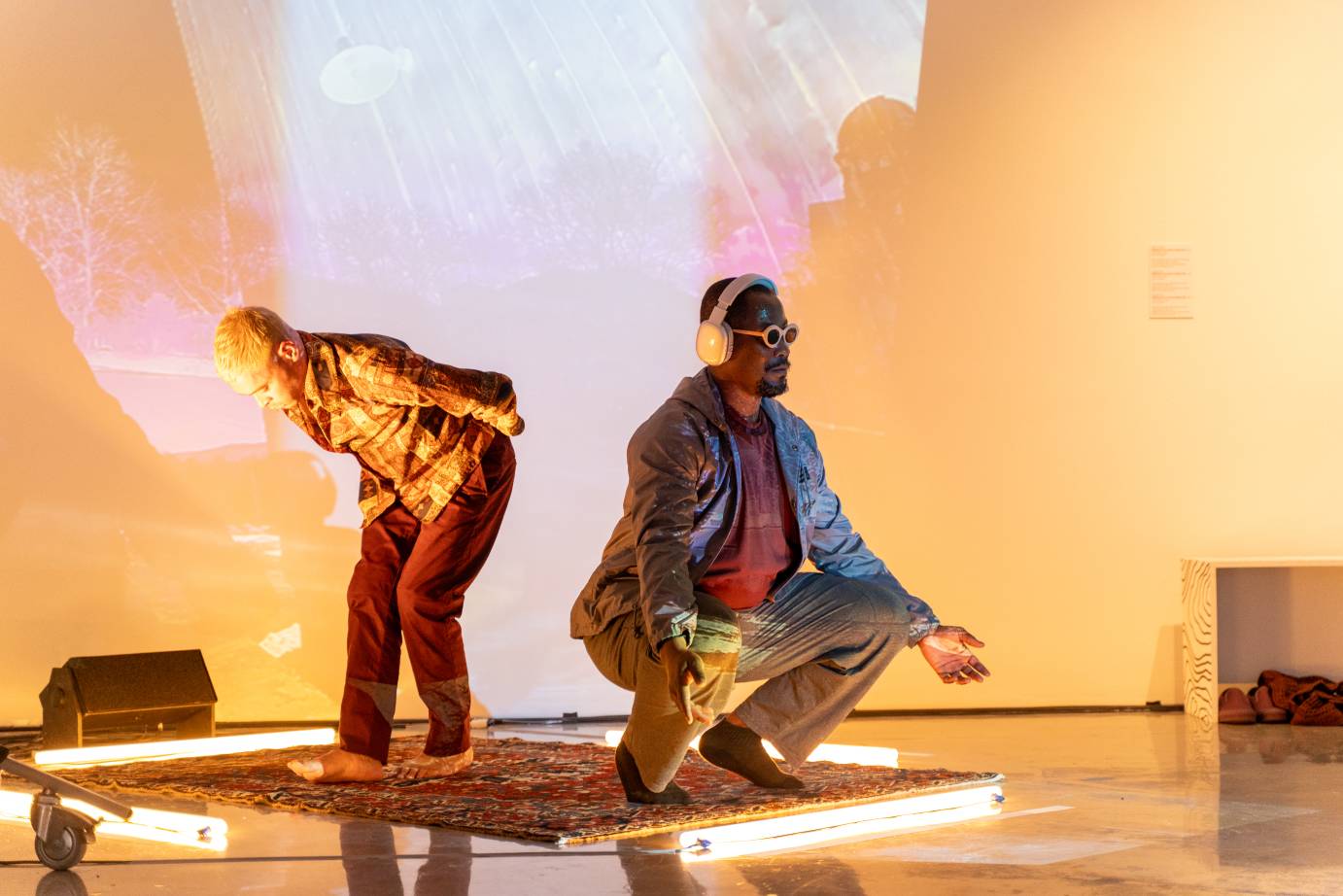
The durational performance was one aspect of Popkin’s “Reorient the Orient” from March 9 to 10, presented by REDCAT. The world premiere event was a two-hour multi-modal piece that incorporated visual art, installation, dance, and writing. Overall, it took up REDCAT’s theater and gallery to explore how brown South Asian bodies inhabit contemporary art and performance spaces.
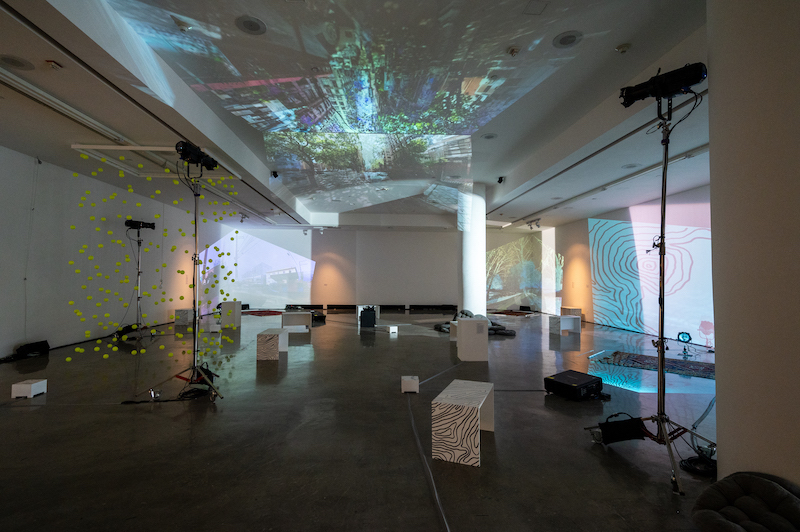
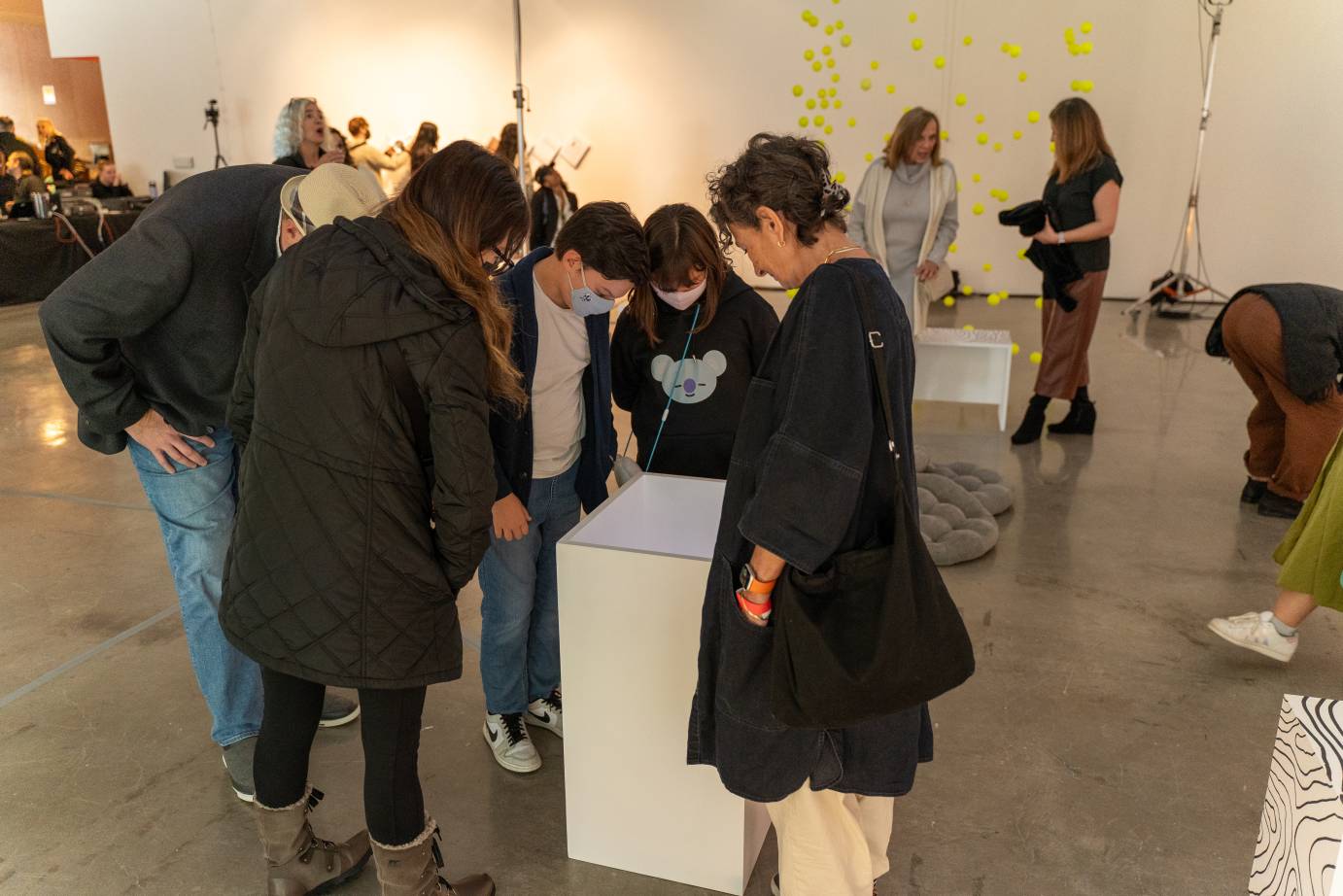
Before performers took over the space, viewers were encouraged to walk about and look at the art installations in depth. While some were activated by performers later on, the pieces that were not offered context to the overall production. Notably, “Rotating Right Angles #1-4” invited people to look inside medium-sized hollow square columns with a video facing up within them. The looped videos within the four pieces scattered across the venue unpacked the meaning behind swastikas — one informed by genocide and the other a cultural symbol of peace.
Popkin appeared in one video adorned in a ski suit, looking up at the viewer peering inside. He stepped away and the suit wiggled, switching the direction of the sleeves and legs, altering swastika symbols. Each video was a pallet cleanser for the performance, forcing audiences to question how history can alter our understanding of the world around us.

One of the centerpieces of the durational performance was “Six Positions on Uncertainty.” The piece was originally presented virtually at the height of the pandemic. This time in-person, a new layer of uncertainty is added: differing interpretations of movement. Performers Jay Carlon, Popkin, Arushi Singh, and Wilfried Souly each altered between six positions — stirring, crab/hover, crouching/squat, long walk, bumpy, and wrist. While Souly’s squatting was more controlled at the start of the durational piece, Carlon explored a more erratic version of the action which moved at a quicker tempo. Fitting to the theme of the piece, audiences had to reorient their perception of a squat after becoming accustomed to one from before.
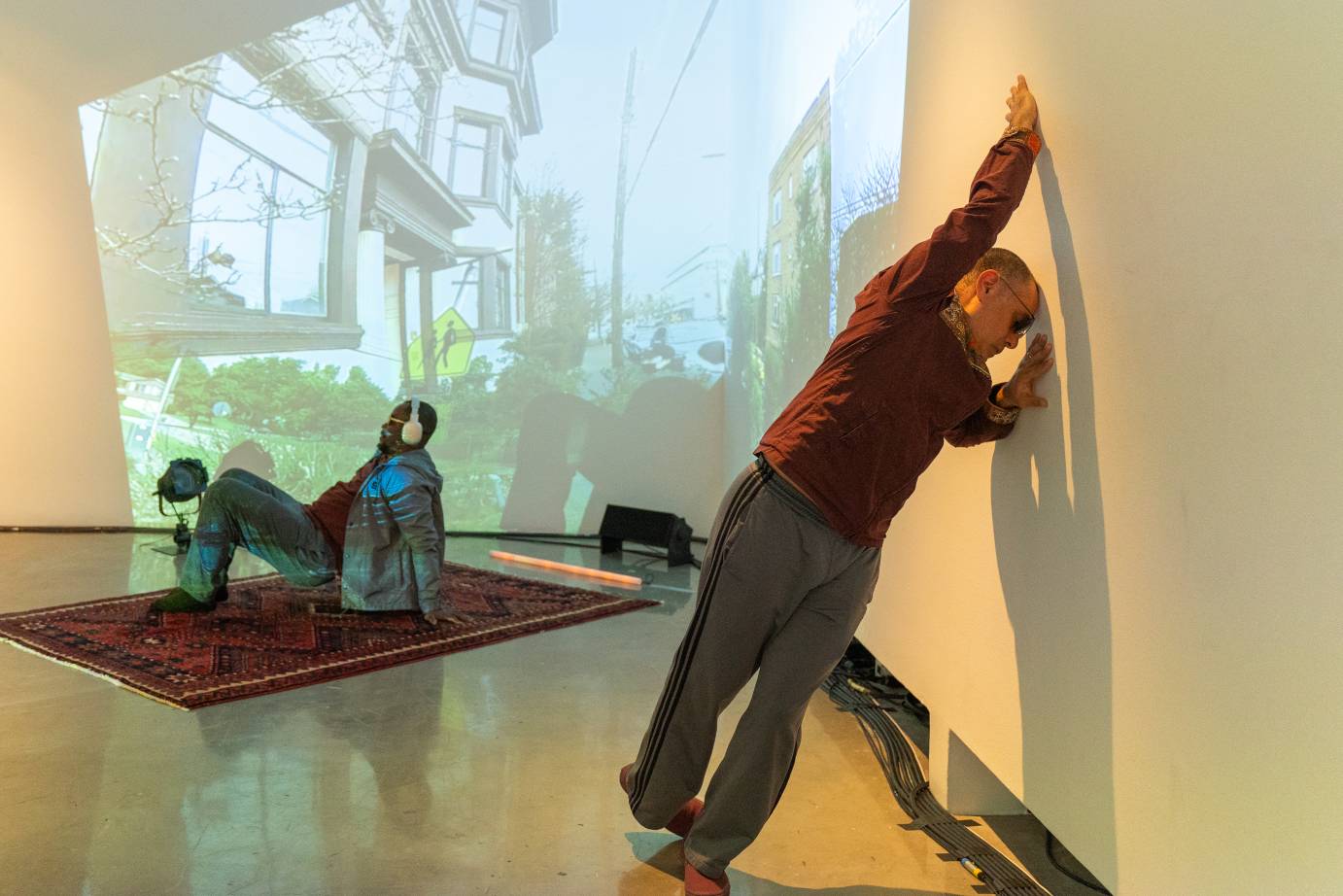
Video designer Meena Murugesan transported viewers with Popkin’s videos “Contour Looping” and “Walking From Home” which were projected behind (or over) performances. Performers cast shadows over the videos, particularly over “Contour Looping,” creating a mesmerizing view of movement. As a performer flicked their wrist in the air, their hand shot through lines creating a topographic map behind them. The limb climbed mountains in a single swoop, dashing its way back to the rug.
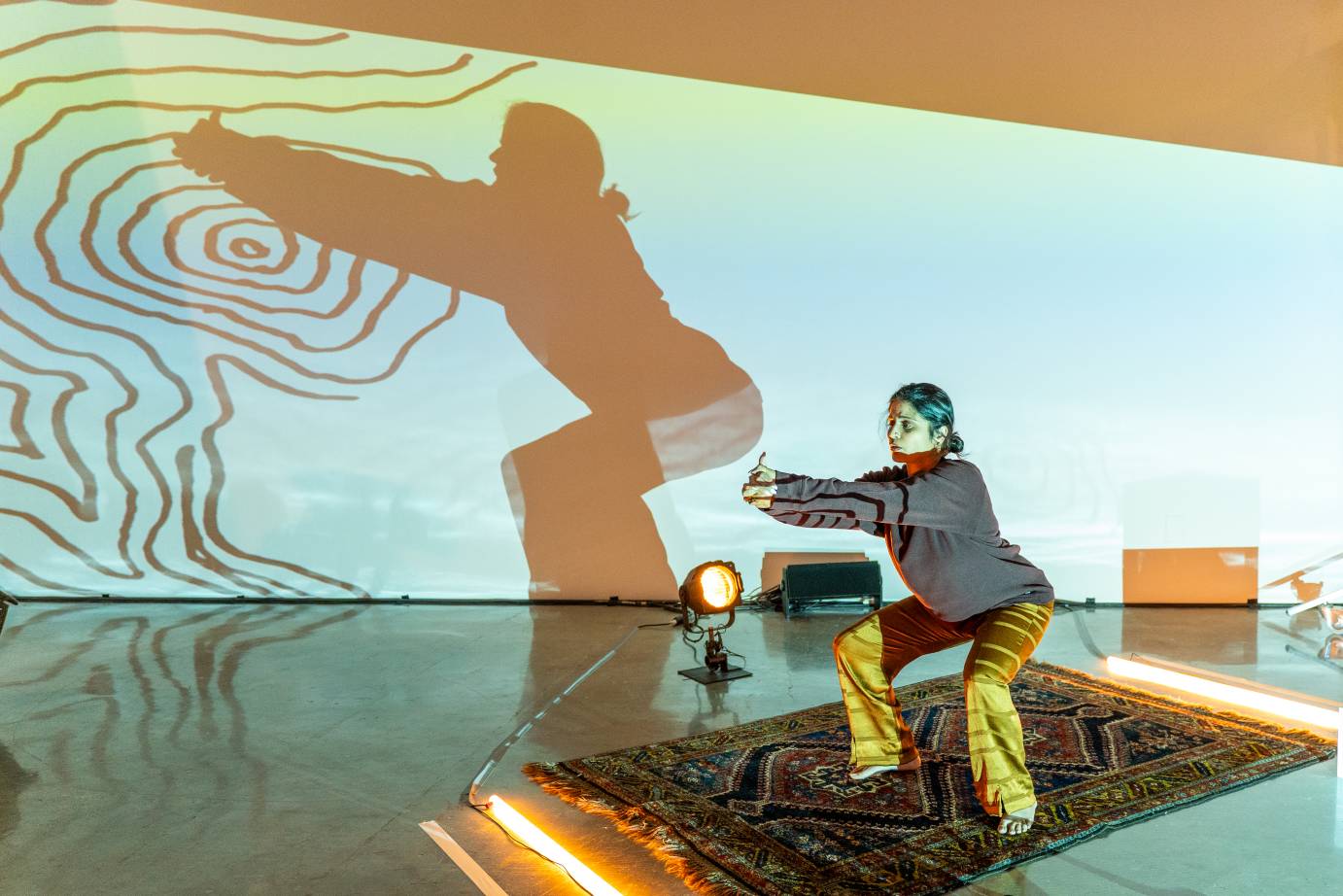
The costumes designed by Marcus Kuiland Nazario incorporated similar patterns to the rugs, blending the body into the fabric with each twist and turn. As Carlon and Singh moved together at opposite corners of the gallery space, the patterns of the rug came to life, piercing through the air before retracting back to the body.
“Reorient the Orient” naturally moved from the gallery space to the theater space where the installation continued (although, there is no one way to experience the piece. It is what you make of your time). On a stage towards the back corner of the space, performers interpreted a movement score in response to archival footage of Gopal — a South Asian dancer and choreographer who was in constant conversation with Western audiences and aesthetics. The piece, “Wading,” aimed to be in conversation with Gopal’s movement without replicating it.
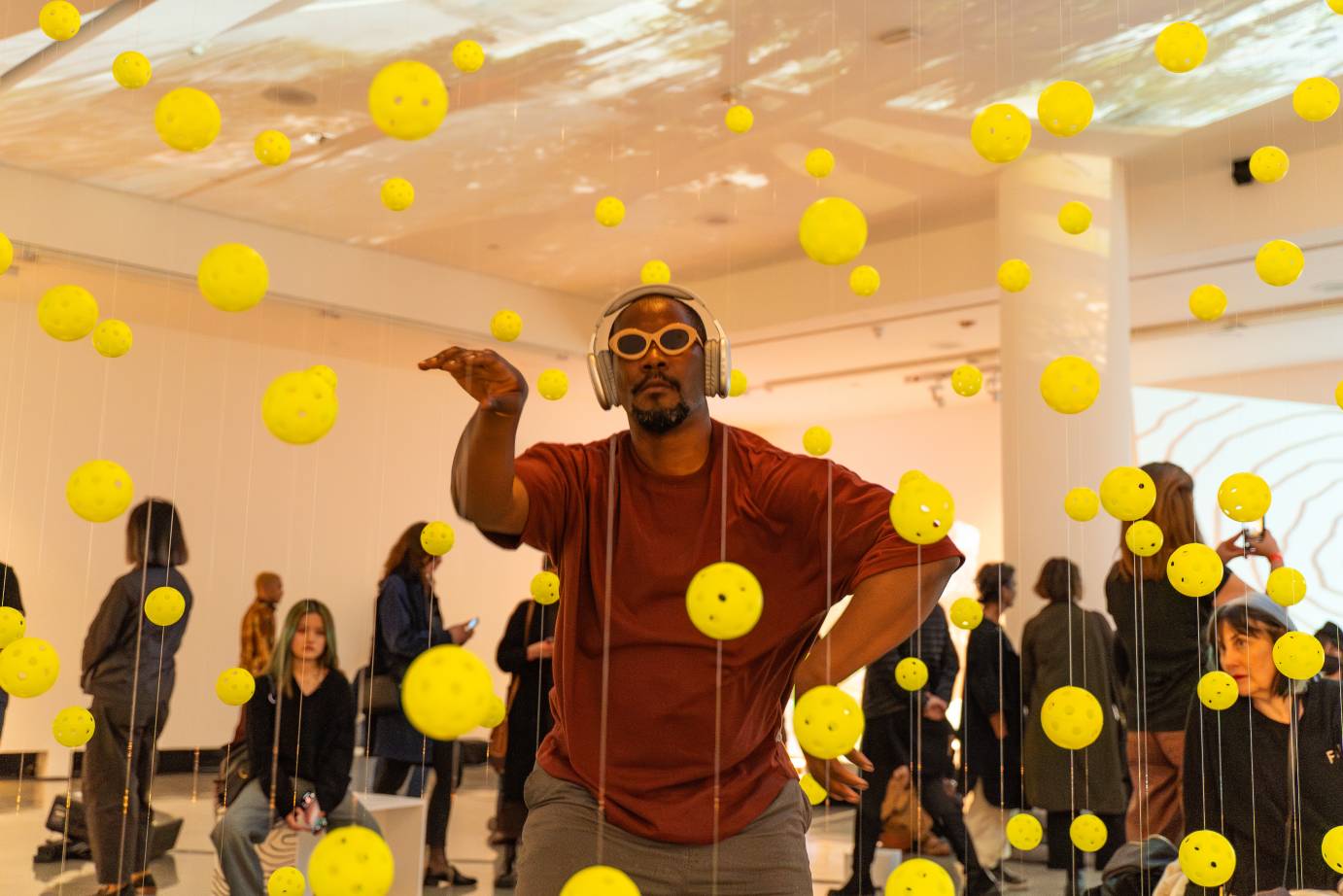
The intention came out strongly when Souly took the stage. As he stepped across, a video of Gopal projected next to him showed something similar, but not quite the same. The replication happened in certain sweet spots where the video and the live performance were in sync. Hip movements and hand flicks by Souly were close to the video, but somehow raw and unique. It kept viewers on their toes in anticipation of the next synergetic moment. Souly then took a mic at the edge of the stage to recite a script of questions beginning with “Do you mind if…” His vocal performance complemented the physical, intentionally pulling out words like “fake” and “give” for an entrancing moment tugging at the audience’s attention.
“Do you mind if I rub my head?” he said before pausing and looking at the handful of people in the space.
“Rub your head,” he commanded. A majority of the people did without looking away from him.
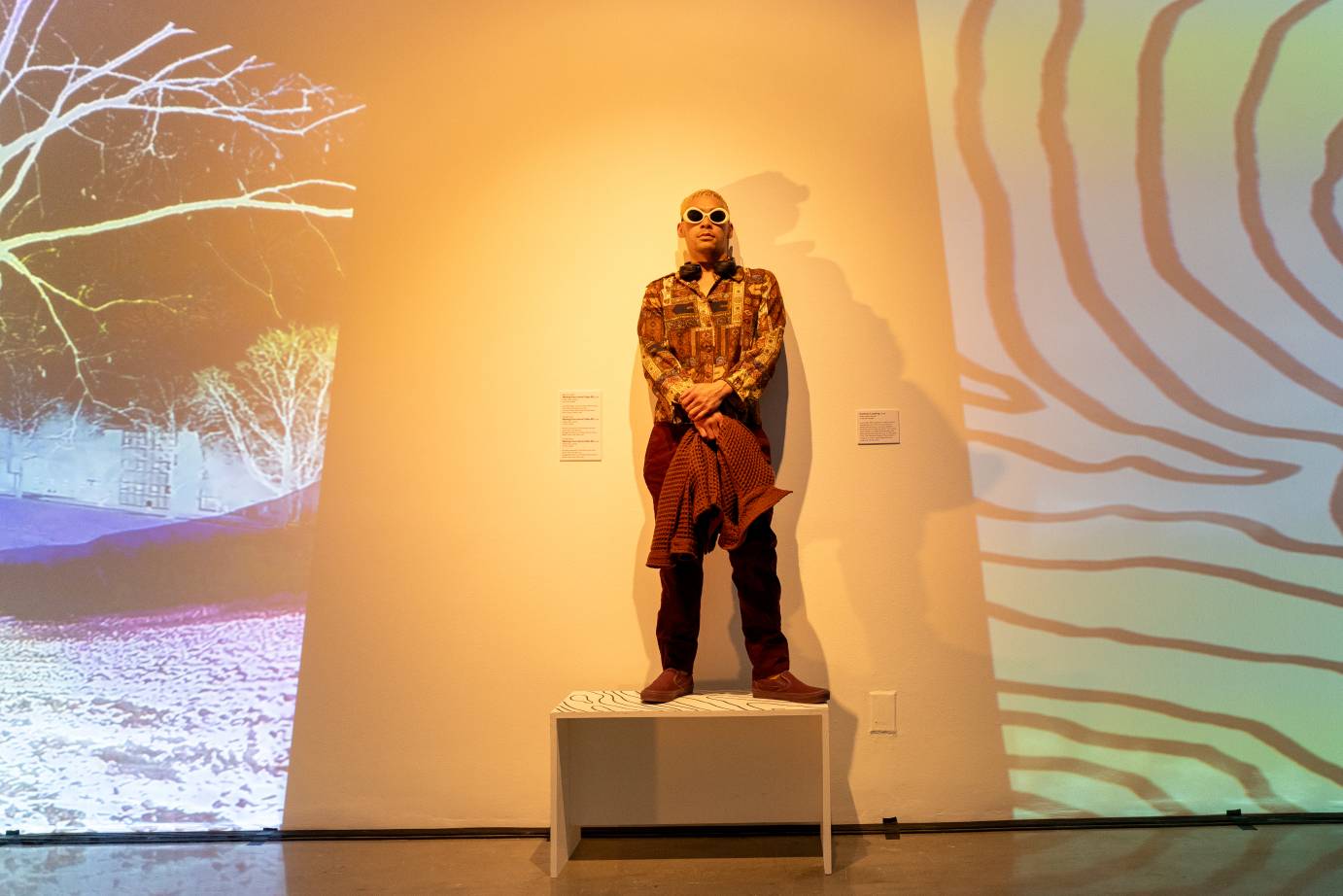
One of the leading questions for “Reorient the Orient” is “What do we put on a person to identify them?” Leaving the durational performance, the view of the body changes. When the preconceived ideas of race, religion, and culture are stripped from view, all that is left is an authentic depiction of the body, how it functions, and how it travels. To truly understand what it means to be a contemporary artist from a diverse background, one must first acknowledge that they are first and foremost an artist. Popkin screams this message in each flailing limb and stark pause.










